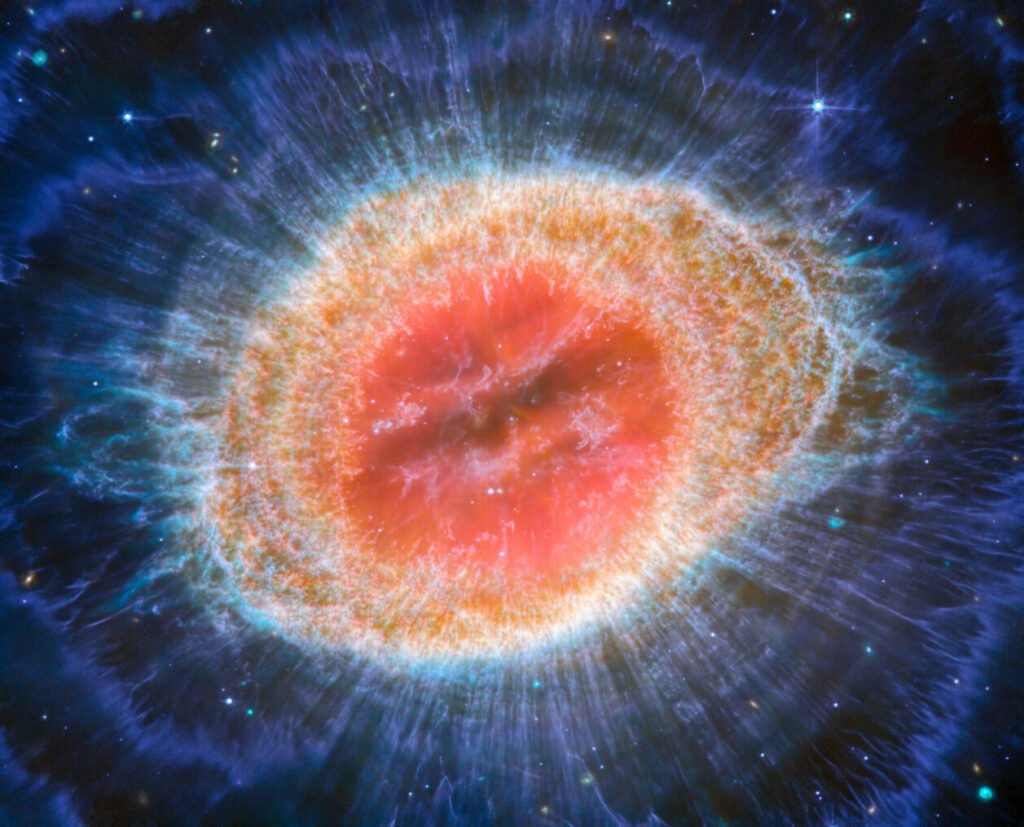One of the most well-known planetary nebulas, the Ring Nebula, was photographed by NASA’s James Webb Space Telescope. The Southern Ring Nebula, one of Webb’s first pictures, is similar to the Ring Nebula in that it exhibits complicated formations that represent a dying star’s last moments. More information about this stage of a Sun-like star’s stellar lifespan is provided by Cardiff University’s Roger Wesson, who also discusses how Webb observations have provided him and his colleagues with invaluable insights into the birth and evolution of these objects, suggesting a crucial role for binary companions.
“At one time, it was believed that planetary nebulae were simple, spherical formations with a single fading star at their centre. They were given their name because, through small telescopes, they resembled fuzzy planets. That star was still a red giant, losing most of its mass only a few thousand years ago. The heated core is now heating up this released gas as a final farewell, and the nebula reacts by emitting a variety of vibrant colours of light. However, current research indicates that the majority of planetary nebulae exhibit amazing complexity. It raises the question of how such complex and delicate non-spherical structures can be produced by a spherical star.

“The Ring Nebula is a perfect place to start to solve some of the puzzles surrounding planetary nebulae. It is brilliant, close by, 2,200 light-years away, and can be seen with binoculars on a clear summer evening in most of the northern hemisphere. We are a multinational team of specialists in planetary nebulae and associated objects, and we go by the name of ESSENcE (Evolved StarS and their Nebulae in the JWST Era). The Ring Nebula fits well in the field of view of Webb’s NIRCam (Near-Infrared Camera) and MIRI (Mid-Infrared Instrument) sensors, allowing us to examine it in unprecedented spatial depth, therefore we realised that Webb observations would be of great value to us. (General Observers programme 1558) accepted our request to observe it, and Webb took pictures.
“We were astounded by the photographs’ level of detail when we first saw them. Each of the 20,000 or so dense molecular hydrogen gas clumps that make up the brilliant ring that gives the nebula its name is roughly the mass of the Earth. Polycyclic aromatic hydrocarbons, or PAHs, are complex carbon-bearing molecules that we would not anticipate forming in the Ring Nebula, but there is a small band of emission from them within the ring. Strange “spikes” pointing out from the centre star that are noticeable in the infrared but very faintly visible in Hubble Space Telescope photos are visible outside the bright ring. We believe they may be caused by molecules that can form in the dim light of the densest materials.
“We now have the sharpest and clearest glimpse of the weak molecular halo outside the brilliant ring thanks to our MIRI photographs. The appearance of up to ten regularly spaced, concentric structures within this faint halo was a startling discovery. As the centre star shed its outer layers, these arcs must have formed around every 280 years. There is no known mechanism that takes so long, like the evolution of a single star into a planetary nebula. Instead, these rings imply the existence of a companion star in the system that orbits the central star roughly as far from it as Pluto orbits the Sun.The companion star moulded and formed the outflow as the dying star threw off its atmosphere. The sensitivity and spatial resolution of any previous telescope were insufficient to detect this tiny effect.
The Ring Nebula is a highly structured and intricate nebula, so how did a spherical star create it? Perhaps some assistance from a binary companion can help.




































